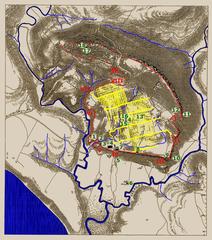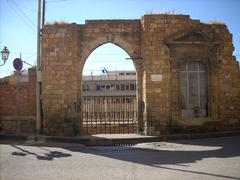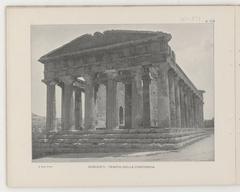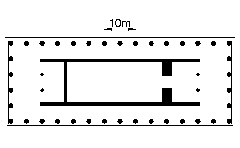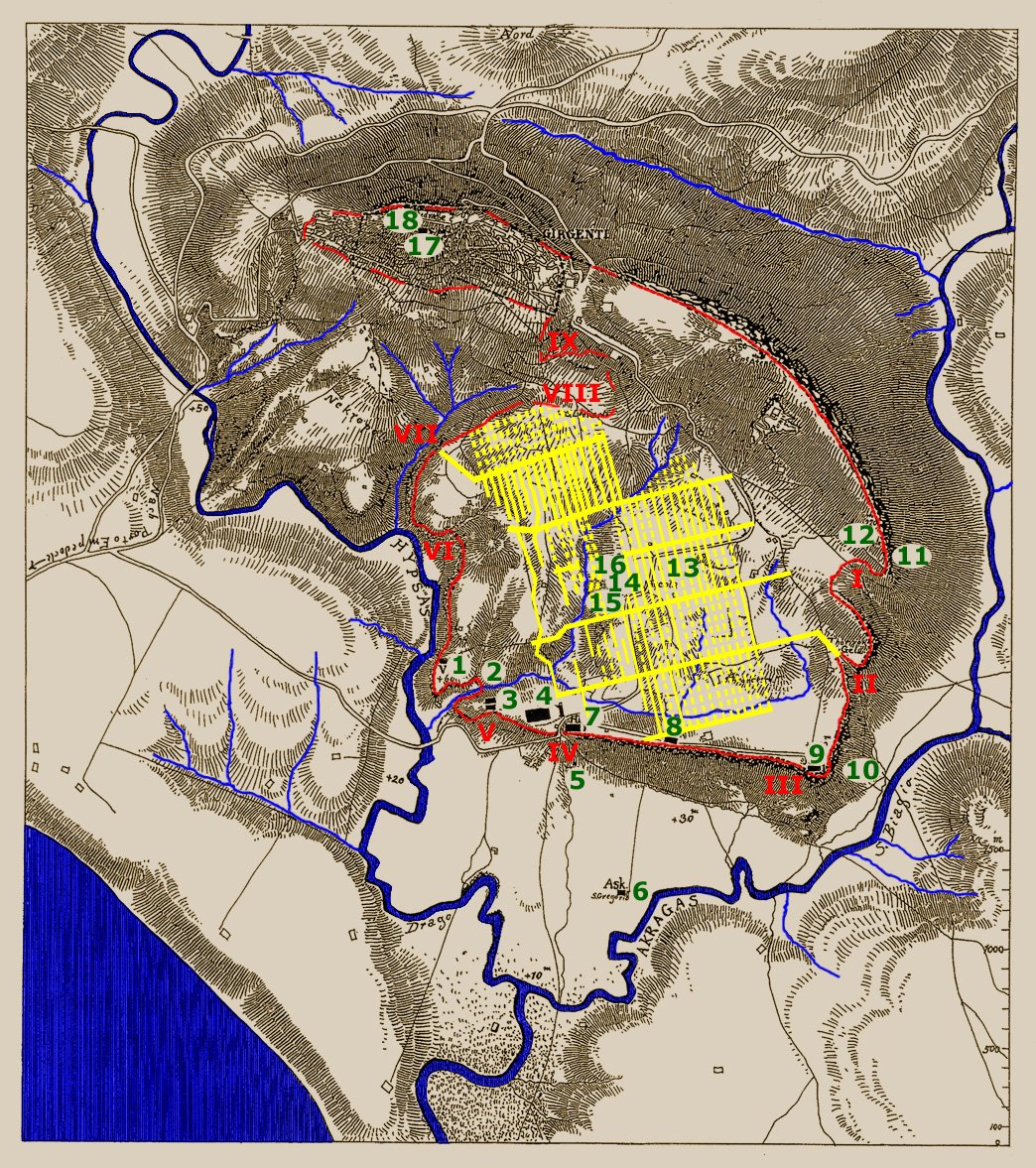
Visiting Acragas (Agrigento), Italy: Complete Guide to the Valley of the Temples – Visiting Hours, Tickets, and Attractions
Date: 14/06/2025
Introduction: Agrigento’s Historical Significance and Visitor Overview
Located on Sicily’s southern coast, Agrigento—known in antiquity as Akragas—is a city rich in Mediterranean history and culture, best known for the spectacular Valley of the Temples archaeological park. Founded around 581 BCE by Greek settlers, Agrigento quickly became a hub of wealth, power, and cultural achievement within Magna Graecia. The city’s legacy is evident in its grand Doric temples, ancient city walls, and a tradition of intellectual and artistic excellence, notably as the birthplace of the philosopher Empedocles. Fertile land and thriving trade routes contributed to Agrigento’s prosperity and architectural grandeur, earning praise from ancient figures such as Plato and Pindar (Wikipedia; World History Encyclopedia; La Valle dei Templi).
Today, visitors can admire a remarkably preserved ensemble of temples dedicated to deities like Concordia, Hera, and Zeus. As a UNESCO World Heritage Site, the Valley of the Temples offers vivid insights into ancient urban planning and religious life while serving as a vibrant venue for cultural events—especially in 2025, when Agrigento celebrates its role as Italy’s Capital of Culture (Lost & Found in Italy; La Valle dei Templi).
This comprehensive guide covers everything you need to plan your visit, including historical context, ticketing and opening hours, accessibility, nearby attractions such as Scala dei Turchi, and practical travel tips. Whether you’re a history enthusiast, photographer, or culture lover, this resource will help you experience the best of Agrigento’s ancient marvels (Travel Notes & Beyond; Audiala).
Guide Overview
- Introduction
- Historical Background
- Foundation and Early Settlement
- The Golden Age: Archaic and Classical Periods
- Conflict, Decline, and Recovery
- Roman, Byzantine, and Medieval Transformations
- Modern Rediscovery and Cultural Significance
- Visiting Agrigento: Key Information
- Visiting Hours and Ticketing
- Accessibility
- Guided Tours and Special Events
- Nearby Attractions
- Frequently Asked Questions (FAQ)
- Conclusion
Historical Background
Foundation and Early Settlement
Akragas (Agrigento) was established around 581–580 BCE by Greek colonists from Gela, with additional settlers from Rhodes and Crete (Wikipedia; World History Encyclopedia). The founders chose a naturally fortified plateau near the confluence of the Hypsas (Drago) and Akragas (San Biagio) rivers, just 5 km from the Mediterranean. The river crab, a symbol of the city, reflects the Akragas river’s importance in the city’s economy and identity (Britannica; Rome on Rome).
Early Akragas grew by assimilating local Sican and Sicel populations, expanding Greek culture through trade and, at times, conquest (Wikipedia).
The Golden Age: Archaic and Classical Periods
By the late 6th and early 5th centuries BCE, Akragas was one of the Mediterranean’s wealthiest and most influential Greek cities. Its territory extended between the Platani and Salso rivers, and its prosperity was built on fertile land, trade, and the labor of both settlers and indigenous peoples (Wikipedia).
Akragas became famous for its lavish lifestyle and monumental architecture. Plato noted that its citizens “build like they intend to live forever, yet eat like this is their last day” (Wikipedia). The city minted its own coins as early as 520 BCE.
Tyranny and Expansion
Akragas’ early years were dominated by tyrants, notably Phalaris (c. 570–549 BCE), who expanded the city’s influence and constructed a 12-km-long wall with nine gates (World History Encyclopedia). Phalaris became notorious for the “brazen bull,” a gruesome execution device.
Under Theron (488–472 BCE), Akragas flourished, especially after Theron’s alliance with Syracuse led to victory over Carthage at the Battle of Himera in 480 BCE. The city’s population may have reached 200,000–300,000, according to some sources (Uncharted Traveling).
Cultural and Intellectual Flourishing
Akragas was a center of philosophy and arts. Empedocles, the pre-Socratic philosopher and poet, was born here, as was the physician Acron (Lost & Found in Italy). The city was praised by poets like Pindar as “the most beautiful of mortal cities” (La Valle dei Templi). The Valley of the Temples stands as a testament to these achievements (Travel Notes & Beyond).
Conflict, Decline, and Recovery
Akragas tried to remain neutral during the Peloponnesian War, but in 406 BCE, Carthaginians besieged and devastated the city (World History Encyclopedia; Wikipedia). The city never regained its former glory. In 338 BCE, Timoleon refounded the city, reorganizing its urban layout with a grid plan and building new villas and mosaics (World History Encyclopedia).
Roman, Byzantine, and Medieval Transformations
Agrigento fell to Rome in 262 BCE, experiencing renewed prosperity as Agrigentum, with new buildings, villas, and a flourishing Hellenistic-Roman quarter (World History Encyclopedia; The World of Sicily). The Byzantine era brought new tombs and a Christian necropolis (The World of Sicily).
During the Middle Ages, the city—then Girgenti—was ruled by Arabs, Normans, and Swabians, leaving a legacy of churches and castles (Nomads Travel Guide). In 1927, the city’s ancient name, Agrigento, was restored.
Modern Rediscovery and Cultural Significance
Systematic archaeological exploration began in the 19th century, making the Valley of the Temples a destination for scholars and travelers (Travel Notes & Beyond). In 1998, the Valley was named a UNESCO World Heritage Site (La Valle dei Templi). Agrigento’s selection as Italy’s Capital of Culture for 2025 highlights its enduring role as a crossroads of civilizations (Lost & Found in Italy).
Visiting Agrigento: Key Information
Valley of the Temples: Opening Hours and Tickets
-
Opening Hours:
- April to October: 8:30 AM to 7:30 PM (last entry 6:45 PM)
- November to March: 8:30 AM to 5:30 PM (last entry 4:45 PM)
Always check the official site for current hours.
-
Ticket Prices:
- Standard entry: €12
- Combined ticket (Archaeological Park + Museum): ~€15.50
- Reduced rates for EU citizens aged 18–25: ~€6
- Free for children under 18 and Agrigento residents
Tickets can be purchased online to avoid queues, especially during peak season.
Accessibility
- The site features improved paths and some wheelchair access; certain temple areas have uneven ground.
- Shuttle services and accessible parking are available.
- Comfortable shoes, sun protection, and water are recommended, especially in summer.
Guided Tours and Special Events
- Guided tours (in multiple languages), audio guides, and mobile apps are available for deeper insight.
- Agrigento hosts cultural events year-round, including concerts, festivals, and special nighttime illuminations.
Check the local calendar or official website for updates.
Getting There and Around
- Agrigento can be reached by car, bus, or train from Palermo or Catania; the nearest airports are in those cities.
- Parking is available near both park entrances; shuttle buses connect the city center to the site.
Nearby Attractions
- Archaeological Museum: Houses over 5,000 artifacts, including the original Telamon statue.
- Scala dei Turchi: A stunning white limestone cliff, free to visit, situated a short drive from Agrigento.
- Historic Center: Explore medieval churches, Baroque palazzi, Via Atenea shopping street, and weekly markets.
- San Leone Beach: Sandy shores and beach clubs just 10 minutes by car.
- Kolymbethra Garden: Ancient citrus groves and nature trails within the park (The Geographical Cure).
Accommodation and Dining
- Options range from luxury hotels like Villa Athena (5-star, park view) to budget guesthouses. Book early for peak travel periods.
- Enjoy Sicilian cuisine at local trattorias; fresh seafood and almond-based desserts are specialties.
Valley of the Temples: Must-See Sites
- Temple of Concordia: Best-preserved Doric temple, converted into a church in the 6th century CE (Travel Notes & Beyond).
- Temple of Hera (Juno): Offers panoramic sunset views over the Mediterranean (Voyage Tips).
- Temple of Heracles: Oldest temple, partially restored columns (The Geographical Cure).
- Temple of Olympian Zeus: Once the largest Doric temple; features colossal Telamon statues (Wikipedia).
- Temple of Castor and Pollux: Four standing columns, the park’s symbol (La Valle dei Templi).
- Temple of Asclepius: Modest remains, historically significant for healing rituals.
Other highlights: ancient city walls, early Christian catacombs, Kolymbethra Garden, and the Pietro Griffo Regional Archaeological Museum.
Photography and Scenic Experiences
- The 2-km main path offers panoramic views of the temples and sea.
- Best light: sunrise or sunset for golden hues.
- Nighttime illuminations on special occasions provide unforgettable views.
- Drone photography is restricted; check regulations before use.
Cultural and Historical Insights
- Agrigento is the birthplace of Empedocles, whose four elements (earth, air, fire, water) are celebrated in the city’s 2025 culture capital events.
- The Valley of the Temples is a UNESCO World Heritage Site since 1997, drawing over 700,000 annual visitors and supporting conservation efforts.
Frequently Asked Questions (FAQ)
Q: What are the Valley of the Temples opening hours?
A: Typically, 8:30 AM–7:30 PM (summer), 8:30 AM–5:30 PM (winter). Check the official website for updates.
Q: How much do tickets cost?
A: Standard entry €12; reduced €6; free for children under 18. Combined tickets with museum available.
Q: Is the site wheelchair accessible?
A: Some areas have accessible paths; shuttles and assistance services are available.
Q: How do I get there?
A: Arrive by car, train, or bus from Palermo or Catania; parking and shuttles available.
Q: Are guided tours and audio guides available?
A: Yes—book online or on-site for expert-led or self-guided options.
Q: When is the best time to visit?
A: Spring (April–June) and autumn (September–October) offer pleasant weather and fewer crowds.
Practical Travel Tips
- Book tickets and accommodation in advance, especially for summer and festival periods.
- Wear sturdy shoes and bring sun protection.
- Respect ZTL (limited traffic) zones in the city center to avoid fines.
- Reserve tables at popular restaurants, particularly during festivals.
- Carry some cash for small vendors and markets.
Conclusion
Agrigento and the Valley of the Temples offer an extraordinary journey through history, art, and culture. From the grandeur of ancient temples to lively modern festivals, every visit promises inspiration and discovery. Plan ahead by booking your tickets, considering a guided tour, and exploring nearby attractions for a truly memorable Sicilian experience.
For updated information, downloadable maps, and exclusive content, visit the official Valley of the Temples website, download the Audiala app, and follow us on social media for travel tips and event news.
References and Further Reading
- Wikipedia: Agrigento
- World History Encyclopedia: Agrigento
- La Valle dei Templi Official Site – Temples Valley
- Lost & Found in Italy – Agrigento, Italy’s Capital of Culture for 2025
- Travel Notes & Beyond – Valley of the Temples Sicily Guide
- Audiala – Agrigento Travel Guide
- Britannica – Agrigento
- Rome on Rome – Ancient Greece in Sicily: Akragas/Agrigento
- The World of Sicily – Valley of the Temples
- Nomads Travel Guide – Agrigento
- Uncharted Traveling – Greek History in Sicily: Agrigento and the Valley of the Temples
- Voyage Tips – Things to Do in Agrigento
- The Geographical Cure – Visiting Sicily’s Valley of the Temples
- Madain Project – Valley of the Temples
- Go Ask a Local – Travel Guide to Agrigento, Sicily
- Along Dusty Roads – Valley of the Temples, Sicily
- History Tools – Unveiling the Splendor of Ancient Akragas
